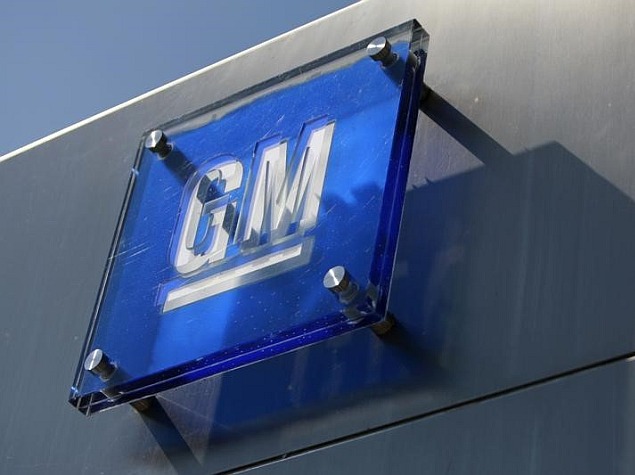Buyers of General Motors Co vehicles will increasingly be able to use
in-car mobile broadband systems to book hotel rooms, cut deals on
driver insurance, pay for data usage and conduct a host of other
transactions.
And each time they do, GM will get a small cut from the seller.
When
the automaker began offering 4G LTE high-speed wireless connections in
some cars last year, it wasn't clear how it would generate revenue to
offset the costs of the hardware. Now, as the company prepares to expand
the technology to most of its 2016 U.S. models, GM is lifting the
curtain on its digital business strategy.
During a recent investor
presentation, company executives put a number on their 4G expectations
for the first time, saying they expect to reap at least $350 million in
improved profits over the next three years from adding the OnStar 4G
systems to its cars.
GM is the first automaker to reveal its
projections, but it is not alone in chasing digital profits. Its
wireless partner AT&T works with seven other carmakers, including
BMW, Nissan Motor and Audi, which was first to offer 4G connections in a
car in late 2013. As in-car broadband usage grows, GM's estimates could
turn out to be conservative, some analysts say, since the potential for
revenues from in-car broadband connections are still being developed.
Taking
a cut of e-commerce transactions conducted on in-car systems is one
obvious revenue generator, but automakers also expect that software
upgrades pushed through a broadband connection will one day save them
hundreds of dollars per car in repair costs. And they are looking at
developing other features as well, such as automatic order placement
when a car approaches its driver's favourite coffee shop or fast-food
outlet.
IHS analyst Mark Boyadjis estimates GM could add about
$439 million in profits from 4G over the next three years. And that
figure doesn't include lower warranty costs related to services driven
by high-speed connections, a number that by itself could dwarf that
estimate, he said.
By the end of 2020, Gartner analyst Thilo
Koslowski expects as much as 80 percent of all new vehicles will be sold
with connectivity and automakers will make a tenth of their revenue
from these services.
GM and the rest of the auto industry want to
avoid ceding control of revenue or customer allegiance to companies like
Google and Apple.
All major automakers are investing heavily in
hardware and software to connect drivers to the mobile web. But it
hasn't been clear how the manufacturers would generate revenue from
their connected cars, or how that money would be divvied up.
GM
debated whether it was wise to publicly reveal its profit target, Phil
Abram, GM's point man on connected car strategy, said in an interview.
In
the end, he said, the company decided that pulling back the curtain was
"part and parcel with painting a vision for the future." It also could
help GM with investors who question whether it risks being undermined as
cars become increasingly digital devices.
Tesla Motors has long
used over-the-air updates on its Model S software. Last month, the
electric carmaker said it would offer automatic steering through a
software update in three months, and it took similar approaches
previously to prevent overheating in its charging systems and increase
ground clearance to avoid road debris.
Networking equipment giant
Cisco Systems estimates automakers could generate at least $300 per car
per year in improved profits - more than the estimated profits for many
small cars. And that is before tapping China and Europe, where GM will
launch 4G later this year.
One risk is that consumers will
simply use their own smartphones, bypassing the automakers. But Abram
expects that if carmakers offer an easy-to-use product "people are
inherently looking for the path of least resistance."
Citi analyst
Itay Michaeli, who earlier this year valued GM's OnStar as high as $9
billion, foresees the ability to sell services and features long after
the initial car purchase. "There's an under-appreciation of what OnStar
is morphing into with 4G LTE."
© Thomson Reuters 2015
 Vivo V50 Lite 5G With MediaTek Dimensity 6300 SoC, 6,500mAh Battery Launched: Price, Specifications21 March 2025
Vivo V50 Lite 5G With MediaTek Dimensity 6300 SoC, 6,500mAh Battery Launched: Price, Specifications21 March 2025 Oppo A5 Pro 4G With Snapdragon 6s 4G Gen 1 SoC, 5,800mAh Battery Launched: Price, Specifications18 March 2025
Oppo A5 Pro 4G With Snapdragon 6s 4G Gen 1 SoC, 5,800mAh Battery Launched: Price, Specifications18 March 2025 Redmi A5 Price, Design, Specifications Leaked Online Ahead of Official Launch18 March 2025
Redmi A5 Price, Design, Specifications Leaked Online Ahead of Official Launch18 March 2025 Vivo V50 Lite 4G With 50-Megapixel Main Camera, 6,500mAh Battery Launched: Price, Specifications18 March 2025
Vivo V50 Lite 4G With 50-Megapixel Main Camera, 6,500mAh Battery Launched: Price, Specifications18 March 2025 Vivo V50 Lite 4G Global Variant Price, Design, Key features Leaked12 March 2025
Vivo V50 Lite 4G Global Variant Price, Design, Key features Leaked12 March 2025


![Gadgets 360 With Technical Guruji: Ask TG [ March 22, 2025]](https://c.ndtvimg.com/2024-12/5s52e4k_-ask-tg_640x480_14_December_24.jpg?downsize=180:*)












